Buying a new home can come with renovations to make it your own. One of the first projects: the bathroom. If there is a bathtub in the room, you’re probably asking yourself, what is this made out of? Is it acrylic or fiberglass, and how do I tell? We’ve looked into these questions for you and created a list of the most common ways to tell the difference.
Fiberglass and acrylic tubs can look very similar. Here are a few ways to tell the differences between them:
Fiberglass-
- Fades from white to yellow
- Scratches or cracks easily
- Lightweight
Acrylic-
- More colors and textures
- Warm to the touch
- Heavy
Looking closely at the edges of your tub, thin edges could mean fiberglass, while thicker edges could indicate acrylic. Another tip to rule out cast iron as a material, hold a magnet to the side and see if it sticks. If it does not stick, you most likely have either fiberglass or acrylic. Below is an in-depth look at the differences, similarities, costs, and care. Keep reading to learn about these and more!
Is fiberglass stronger than acrylic?
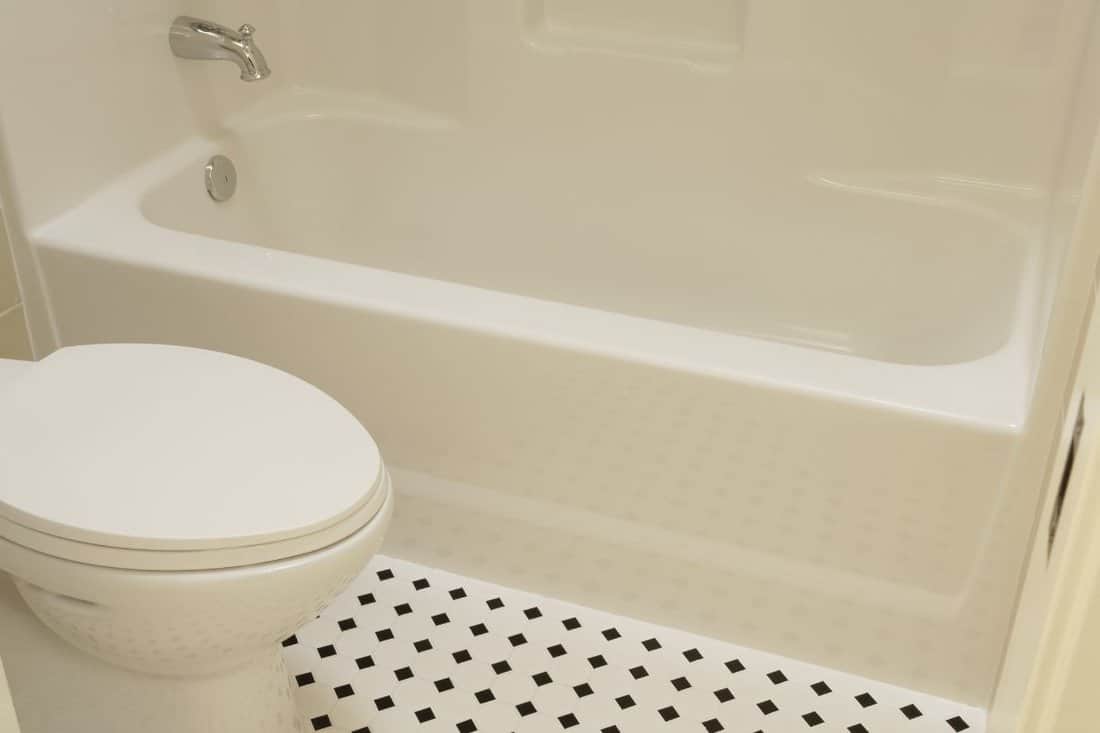
While both of these materials contain fiberglass, the way the tub bases are made makes the difference. Fiberglass tubs are made by spraying the fiberglass plastic into a mold and finishing it with a resin gel coat. Acrylic sheets are reinforced with fiberglass and then heated into a mold. Thus, due to fiberglass only being sprayed into a mold, acrylic is the stronger of the two psychical make-ups.
The resin coating sprayed onto fiberglass bathtubs can be worn down after time. Unless regularly reglazed, you can run the risk of getting hairline cracks which can lead to mildew. Most of these tubs have an overall thickness of 1/4 of an inch. Acrylic tubs are thicker, coming in at an overall size of 3/8 inches. Since it is thicker, it is less prone to cracking, scratching, and chipping. Acrylic tends to have that stable feeling versus the flimsier feel of fiberglass.
Click here to view this acrylic bathtub on Amazon.
How long does a fiberglass bathtub last?
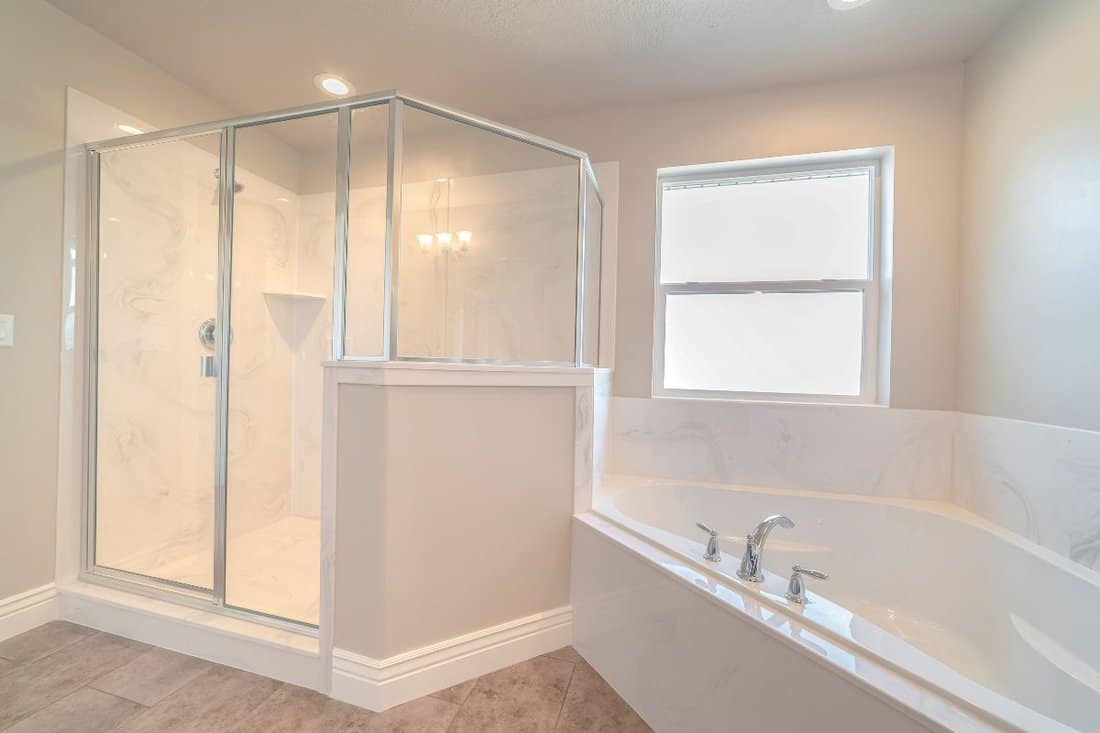
The longevity of your fiberglass tub can vary. A median life span is between 10-15 years. Proper care is needed for fiberglass tubs to ensure their quality. If your tub or shower is used heavily, it may lean towards only 10 years since it can crack easily. However, there is an option of refinishing the surface before it passes the point of no repair. Fiberglass tubs can be a good choice for townhomes, rentals, or timeshares since they can be easily replaced and are more affordable.
How long does an acrylic bathtub last?
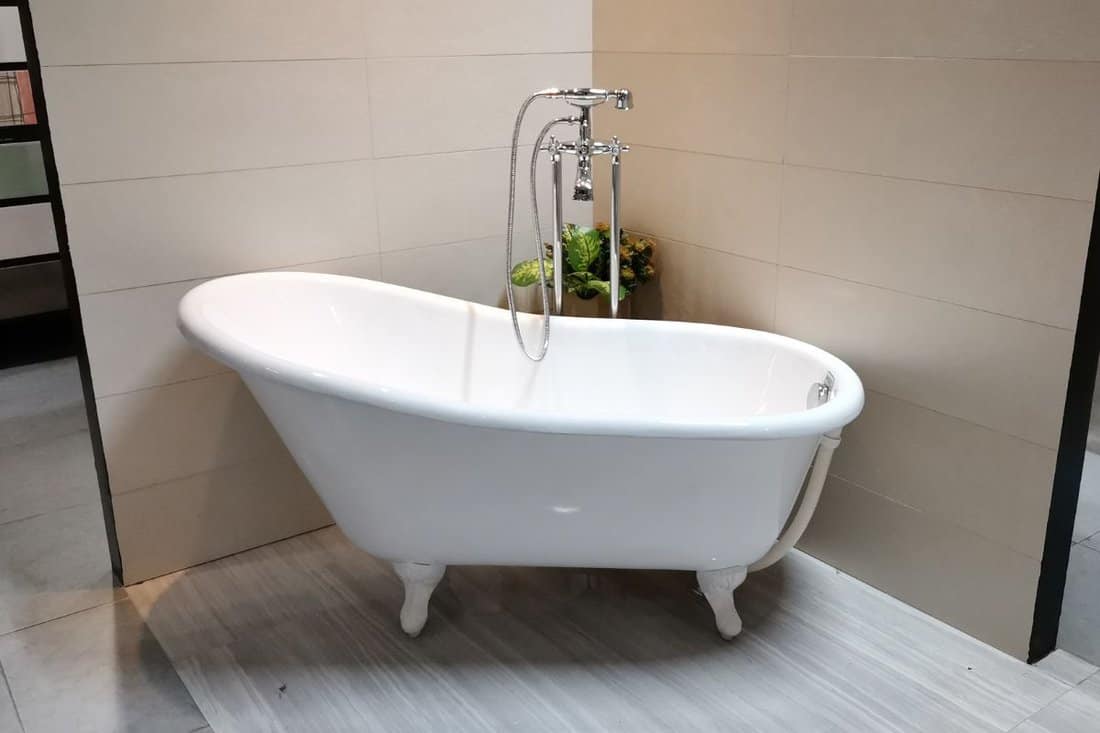
An acrylic tub can last anywhere between 15-25 years. Due to its thicker plastic formation, acrylic is less likely to damage over time. That means all those slippery bottles won’t create any soft spots if they fall.
You’ll pay more upfront for an acrylic tub, but you won’t have to worry about reselling it anytime soon. It could also add to the resell value of your home if it’s from a recent renovation. A key tip with acrylic appliances, pay to have them installed properly. If an acrylic tub is improperly put into place, it can lead to bending down the road.
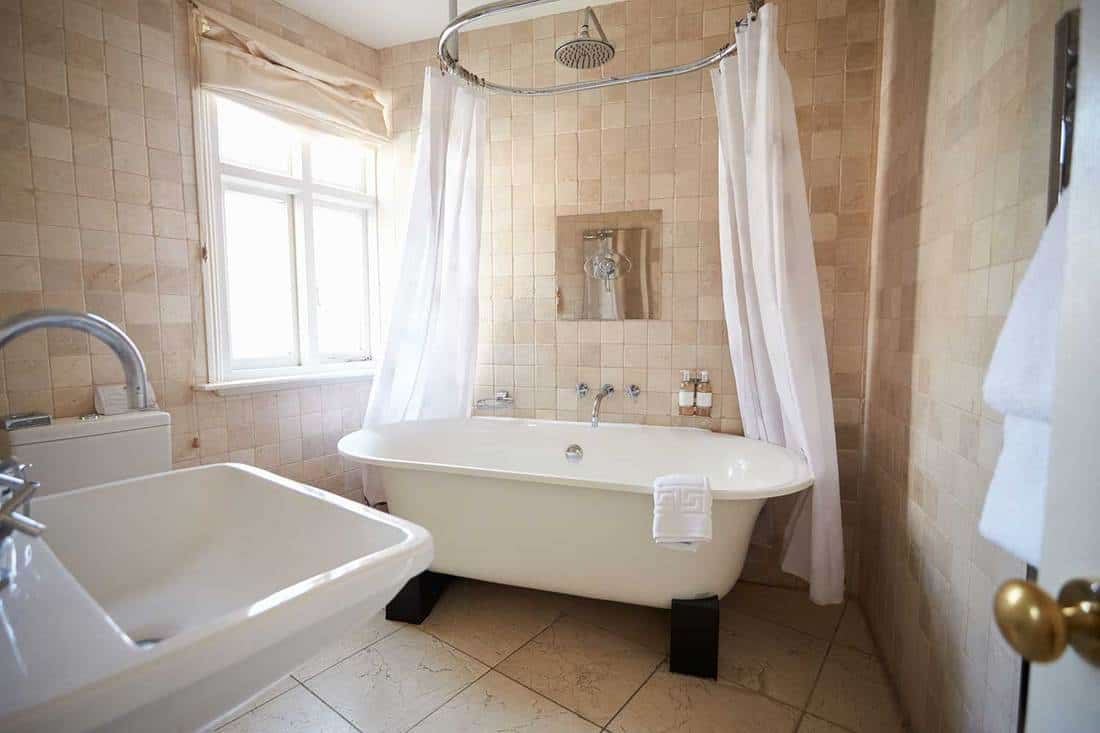
Cost and maintenance
Each form of bathtub is going to have its own maintenance and cost differences. Determining which one is best for you could be determined by budget, the time needed for upkeep, or ease of install. Also, consider if you need more than one, which will be getting used the most and, therefore, need to be high-end.
The cost for the installation of tubs and showers nationally average around $4000. This can, of course, vary on size, make, and the number of items being installed. Prices factor in removing the tub, disposing of old material, installation, and any extra additives you desire. You may cut some costs by removing the old fixtures yourself, be careful not to hit any pipes. It should also be noted that a cast iron tub will need to be removed as a whole unit.
How much does a fiberglass shower cost?
The average fiberglass shower can cost anywhere between $300-$900, depending on size and features. On the other hand, the average for tubs is between $300-$700. Both are easy to install and affordable. Fiberglass is also the first choice for walk-in and wheelchair-accessible tubs; these can reach up to $2500 in cost. If you’re still looking for fiberglass’s durability but need something to accommodate specific needs, walk-in tubs and showers are a great option available to you.
A fiberglass shower can be installed into a common wall stall. Or you can purchase a standalone fiberglass tub for an added level of luxury. Who wouldn’t love coming home after a long day and being able to take a warm soak in the tub?
How do you clean fiberglass?
There are several ways you can clean your fiberglass tub or shower. It is recommended to wipe your entire shower down after each use in a perfect world, but with tight time schedules, this could be hard to fit in. Instead, you can do a deep clean once or twice a month.
To begin, run a hot shower and get the area nice and steamy. This will help loosen up the dirt and grime. Next, you use a mixture of vinegar and water with a few drops of dish soap. Apply a layer of baking soda all over the tub and walls and spray with your homemade cleaning solution. The baking soda will begin to bubble after about 15 minutes, and then you can start to wipe the solution off. You can use a small cleaning brush for tight spots and a soft sponge for the walls.
It is not recommended to use any type of bleach or abrasive cleaning tools. A water-diluted ammonia solution can be used instead but remember to keep your ventilation fan on!
If your shower and tub have a bit more of an oily feel to them, you can use a truck degreaser. To use a degreaser, spray it over the desired area, let it sit for about 10 minutes, steam the shower and wipe off. To finish any cleaning process, rinse the entire area with warm water, rinse with cold water, and finish it off by completely drying it. If you have a window, open it to allow for a full dry. Or a fan will work as well. Having a completely dry bathtub will prevent the growth of mold.
Click here to view this non-abrasive degreaser on Amazon.
Can you repair a fiberglass bathtub?

Fiberglass tubs can be prone to cracking and chipping. Instead of replacing your tub for every little crack, you can repair it. There are premade epoxy kits you can purchase to mend your tub or shower at home yourself, or of course, you can hire a handyman. The fix will take one day to do; most of the time will be needed for drying. Here are the steps to repair a fiberglass tub:
- Assess the damage
- Clean the area
- Add a two-component foam for support
- Apply a mesh patch
- Mix the epoxy
- Cover or fill the damaged area
- Leave to dry
- Sand down any unevenness
- Paint to match the original color (if necessary)
When assessing the damage, if the crack or hole appears to be from a bad foundation, make sure to call a professional. Otherwise, this can be an easy weekend project!
Click here to view this fiberglass repair kit on Amazon.
How much does an acrylic shower cost?
When looking at acrylic bathroom appliances, you’ll see there are a few different options. There are acrylic shower pans, bathtubs, and shower alcoves.
An acrylic shower pan is the base of a standing shower. The bathtub would be a full tub, free-standing, or installed. And then a shower alcove which is the wall attachment featuring shelving and handles. A pan can be relatively cheap and easy to install, coming in around $150-$300. Acrylic bathtubs range in cost from $300-$900. Finally, a shower alcove would cost anywhere between $300-$400.
Shower pans are easy to clean and can be a replacement option for tile, so you don’t have to worry about cleaning grout. Bathtubs and alcoves can be combined to give you a cohesive overall look. Alcoves give you the advantage of extra storage space, so no need for shower caddies or overpacked tub corners.
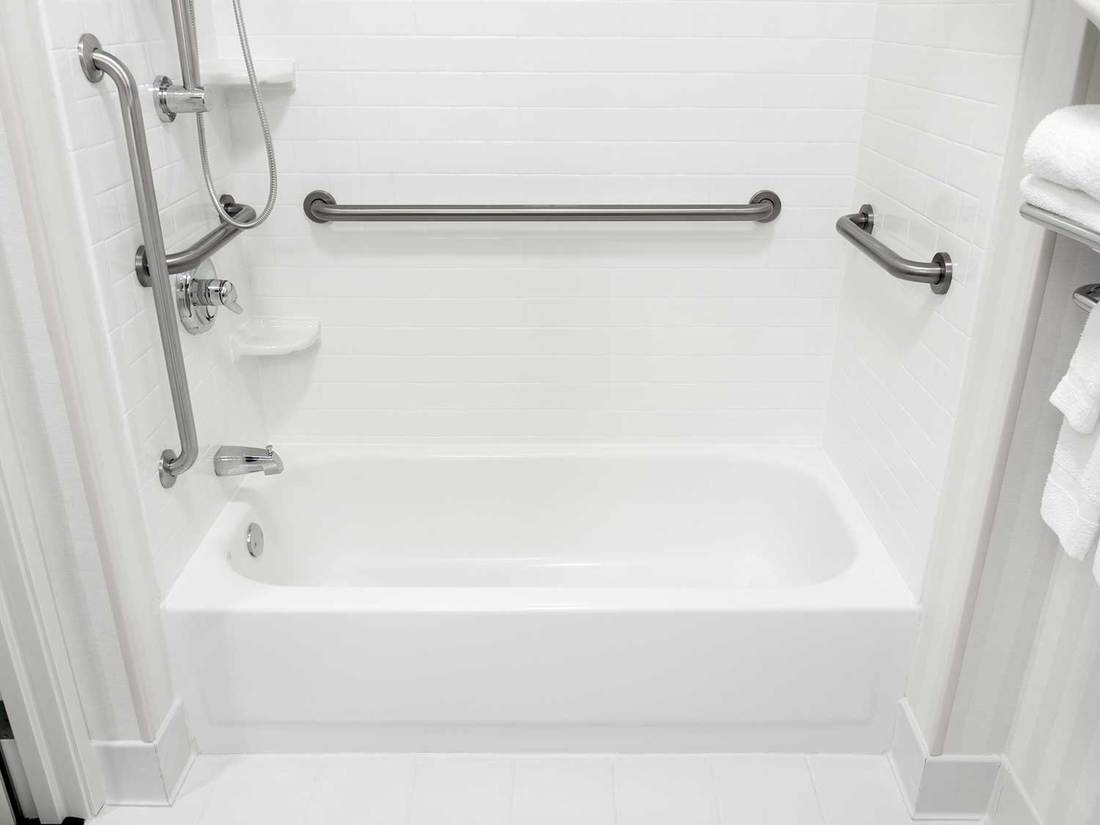
How do you clean acrylic?
Acrylic doesn’t scratch as easily as fiberglass. However, it is still a good idea not to use abrasive cleaning formulas or rough sponges on it. For example, a cleaning solution from the store, 409 or CLR Cleaner, would be good choices. If you aren’t sure, check the label to make sure it doesn’t contain any acetone.
If you prefer natural cleaning solutions, you can use mixtures of citrus juice and baking soda to clean off grim as well. Lemon and grapefruit juice are acidic enough to break down soap grime without damaging the tub surface.
As with fiberglass, you can also spray the surface with a dish soap and vinegar solution. A microfiber cloth is recommended for wiping down and drying acrylic surfaces. These towels will be soft enough not to scratch while still getting the job done!
A tip: if you’re deep cleaning and would like to clean your faucet and showerhead. Wrap your faucet in a towel soaked in vinegar, leave for half an hour and wipe off. For your shower head, put enough vinegar in a bag to cover the surface. Secure it and leave for up to a day for a new-looking fixture!
Click here to view 409 cleaning solution on Amazon.
Final thoughts
Your bathtub and shower are some of the most used appliances in your home. To ensure the proper upkeep is maintained, you’ll need to figure out if it’s an acrylic or fiberglass material. Acrylic will be thicker and warmer to the touch. Fiberglass will be lightweight and thin. Both have their pros and cons in durability, price, and maintenance. After reading this article, you’ll be able to move forward confidently with any renovation plans for your bathroom!



